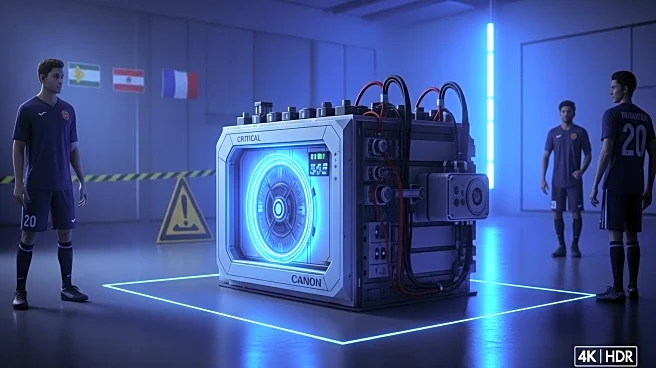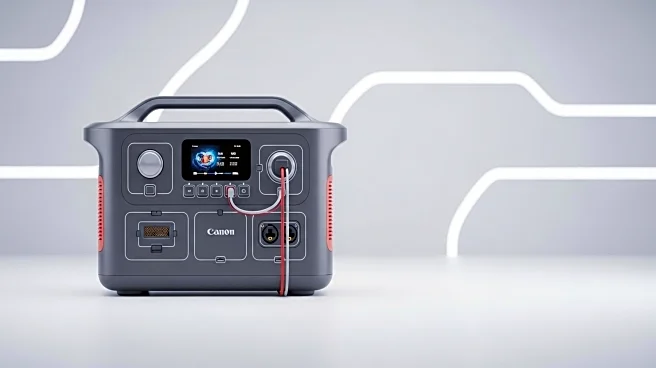What is the story about?
What's Happening?
Researchers have developed a new polymer electrolyte design that significantly improves the performance of lithium batteries. The design incorporates a fluoropolyether-based polymer electrolyte with strongly solvating polyether and weakly solvating fluorohydrocarbon pendants. This creates an anion-rich solvation structure, forming fluorine-rich interfacial layers on the cathode and anode. The lithium-rich manganese-based layered oxide (LRMO) cathode exhibits improved oxygen redox reversibility and reduced interfacial side reactions. The quasi-solid-state polymer electrolyte enables high-areal-capacity cycling and long-term stability, achieving an energy density of 604 Wh kg−1 in pouch cells.
Why It's Important?
This advancement in lithium battery technology addresses key challenges such as interfacial degradation and cycling stability. By improving the oxygen redox reversibility and reducing side reactions, the new design enhances the safety and efficiency of lithium batteries. This development is crucial for the future of high-energy-density and high-safety battery systems, which are essential for applications in electric vehicles and renewable energy storage. The ability to achieve high energy density and stability could lead to more efficient and longer-lasting batteries, benefiting industries and consumers alike.
What's Next?
The research provides a promising direction for further advancements in lithium battery technology. Future work will focus on optimizing the polymer electrolyte design and exploring its applications in various battery systems. Researchers will also investigate the scalability of this technology for commercial production. The potential for integrating this design into existing battery manufacturing processes could accelerate the adoption of high-performance lithium batteries in the market. Continued research and development in this area will be critical to meeting the growing demand for efficient and sustainable energy storage solutions.
AI Generated Content
Do you find this article useful?













